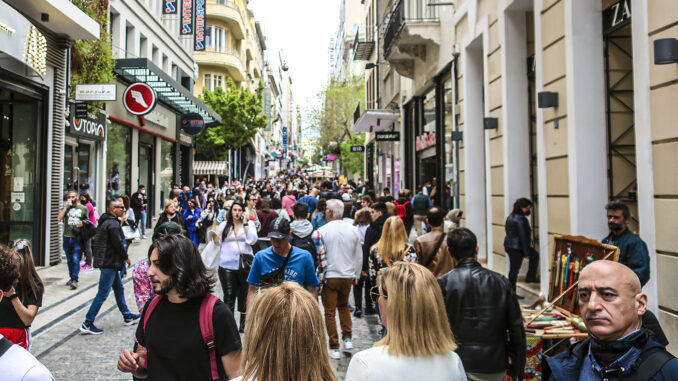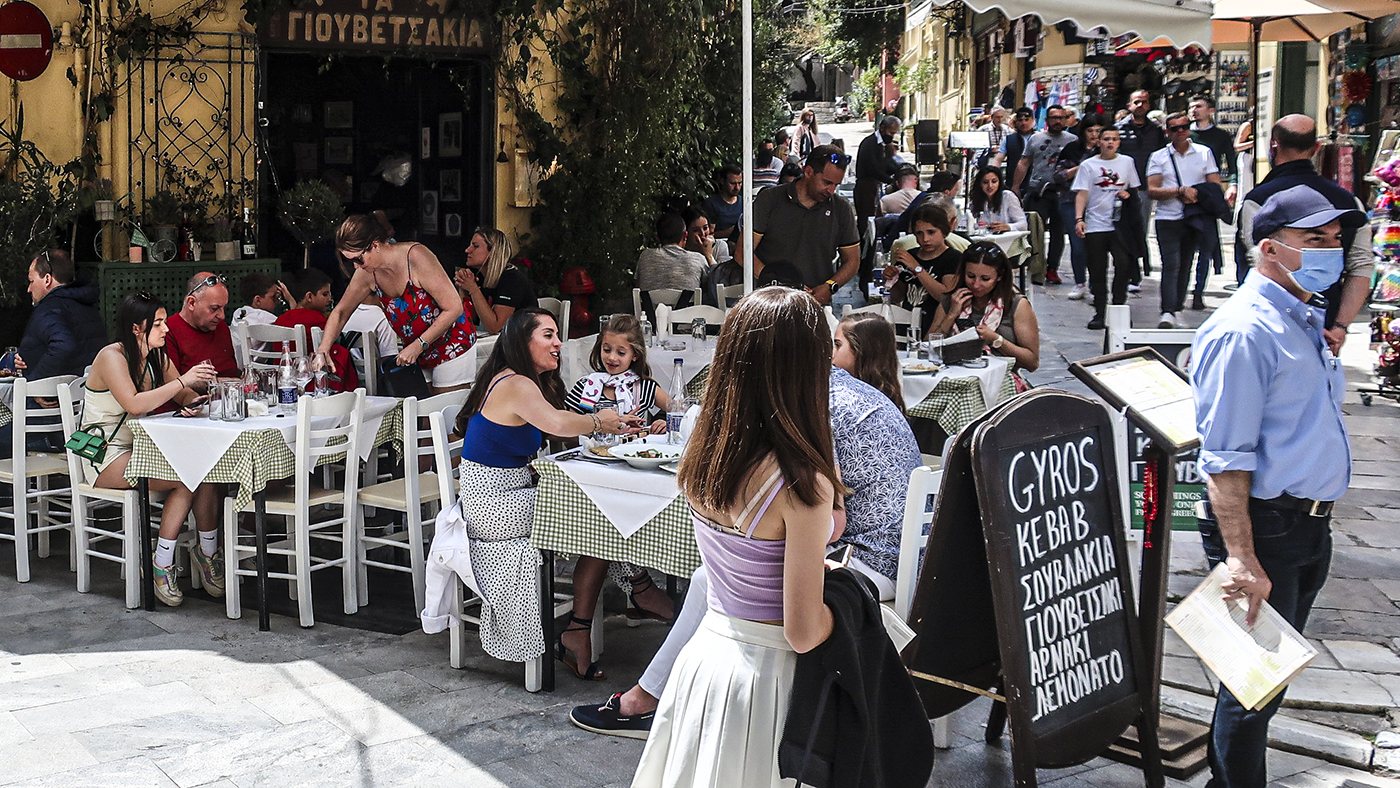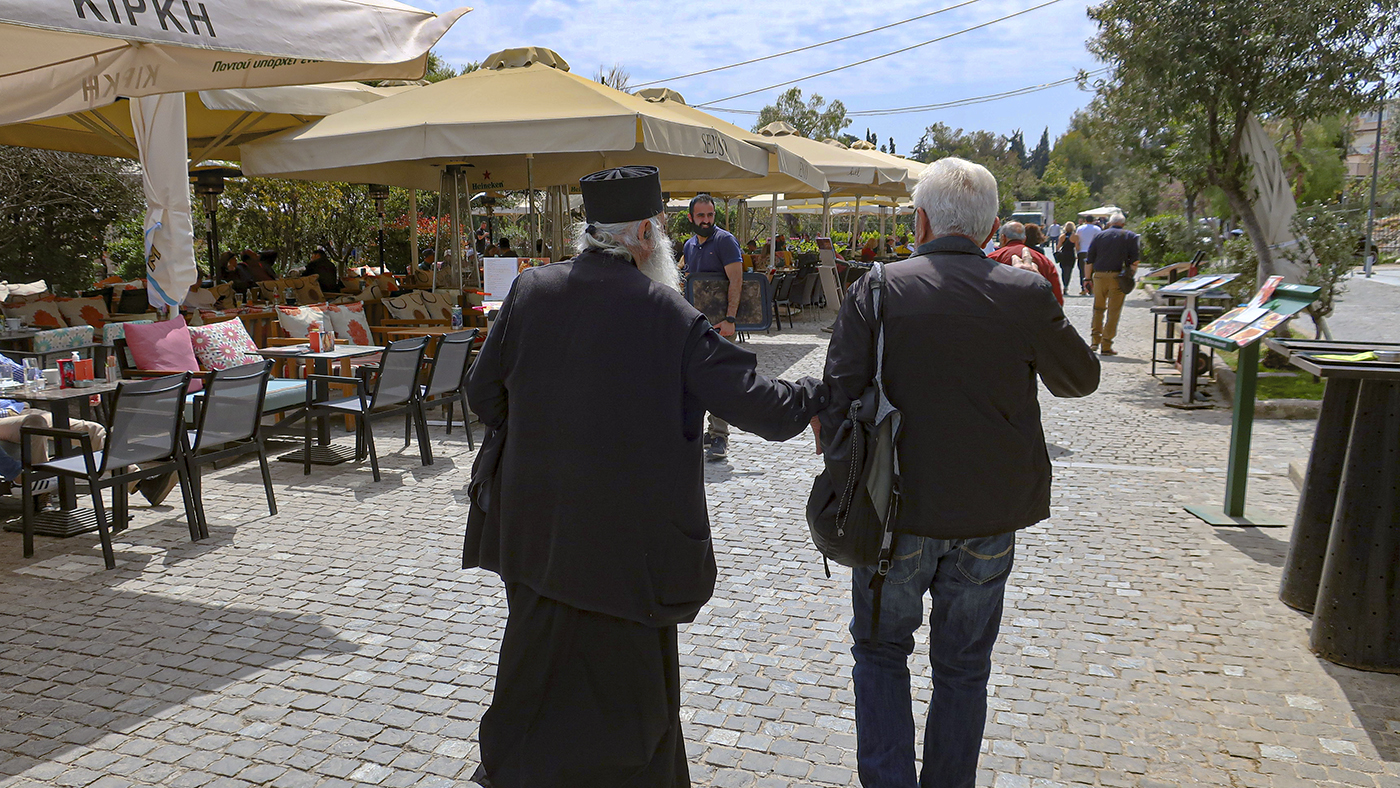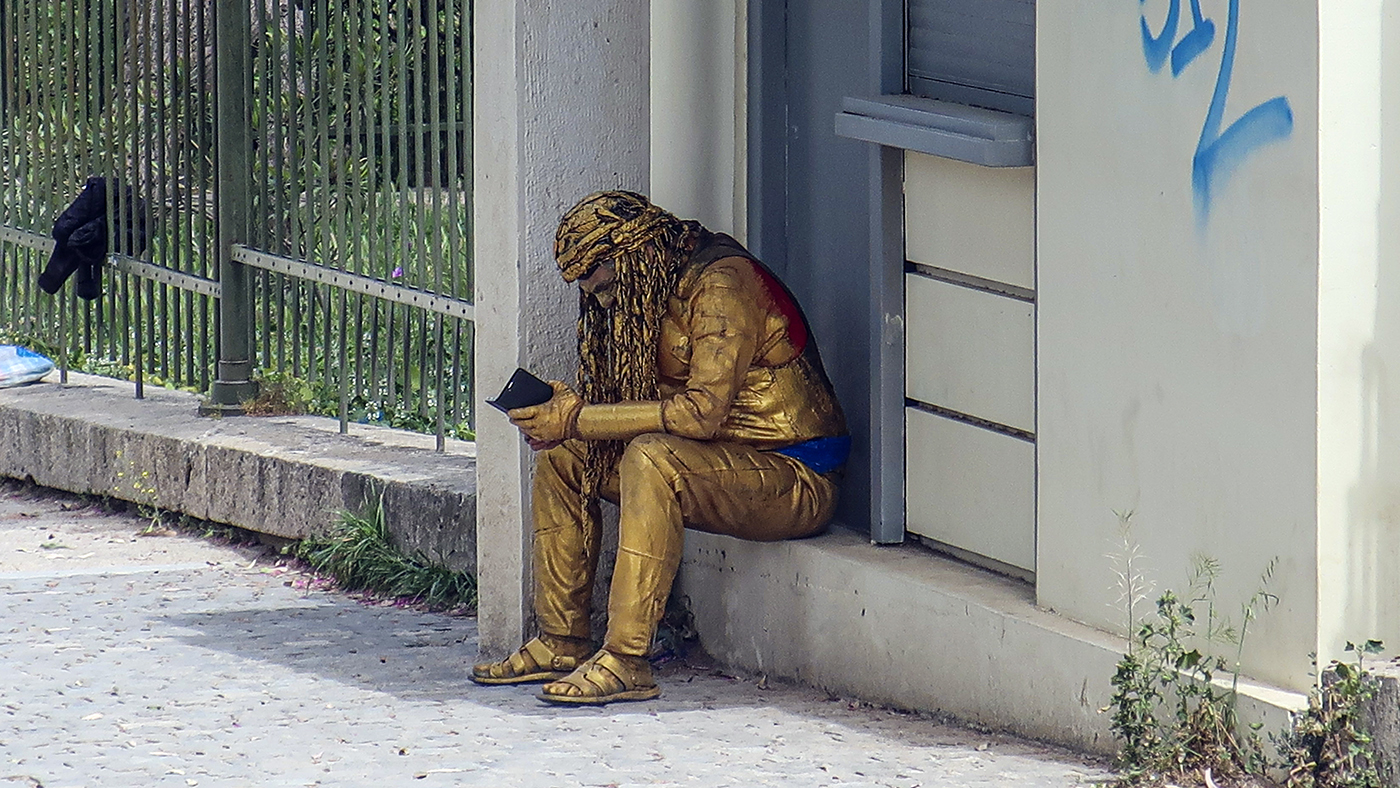
Squeezing through the massive crowds of shoppers waiting in queues to get into tony stores on Ermou Street or joining waves of tourists making pilgrimages to the Acropolis, it’s almost impossible to believe that five yeas ago Greece was broke and just two years ago, Athens he was in total lockdown because of the worldwide pandemic.
But now, while other cities in Europe are only starting to see tourists returning to hotels and visiting attractions, Athens seems to be already back on track for tourism. Coming down for breakfast at the Herodion Hotel near the Acropolis Museum, where we were staying for a weekend before joining a cruise aboard Oceania Cruises‘ Insignia, the hotel’s large breakfast room was completely packed with people planning their sightseeing day trips. The streets of the once-dusty Plaka are newly repaved with handsome granite blocks and the restaurants with outdoor tables lining both sides of the route are packed with tourists, as well as an impressive numbers of locals.
It all seems so very apt in the city that laid the foundations of western culture 2,500 years ago. Here’s a look at how a city that was slipping into history has redefined itself :

Taming the wildcatters
It starts at the airport. On previous visits to Athens, getting into a taxi was an experience in negotiation. ”Meter broken, lot of traffic” was the usual complaint of the driver of an aging yellow car who set a fare to your destination that was often twice what the guidebooks recommended. Today the set fares from the airport to central Athens are posted prominently at the taxi queue. The flat rate of 35 Euros is actually reasonable considering how far it is into town and the high price of fuel for the modern Mercedes and Skoda taxis that most taxi fleets now run.

It’s what’s on the plate that counts
The cliché of line dancing to bouzouki music and throwing cheap plaster plates on the floor to signify new beginnings is thankfully fading. There are still tavernas that offer up the “traditional Greek fare” like moussaka and souvlaki, but increasingly the menus in the city are international.
The dishes at the Restaurant Gargaretta across from the Acropolis museum we visited one evening featured gnocchi with prosciutto as well as sea bream on a hazelnut mousse. Around the corner from the traditional restaurant row in the touristy Makrigiann neighborhood, there are places that more likely to specialize in Chinese or Italian fare than anything Greek.
And you’re well advised to make reservations. The Namaste Indian restaurant near our hotel we ate at on a Sunday night was so popular it was turning diners away.

Obsessively cleaning up their act
Even on Sunday, the streets in the tourist zones seem spotlessly clean and squads of street sweepers with push carts can be seen obsessively mining the gutters for wrappers, discarded face masks and cigarette butts (yes, smoking is still a thing here). Garbage trucks do morning and evening pickups around the restaurant zones to keep waste bins from overflowing. There’s still a graffiti epidemic in other parts of the city, but in the touristy zones around the Acropolis, it at least seems under control.

Paving a road ahead
While the ancient streets around the Acropolis hill and the steep climb to the top may be sacred grounds, walking over the dusty stony paths was a task that in the past was more suited to hiking boots than sandals. An ongoing program of surfacing pedestrian roads with millions of granite
blocks and making the route to the summit more mobility accessible has been a blessing for weary feet. Cars are banned from the routes around the archaeological zone and tourist buses have to park away from the crowded tourist routes.
The improvements have had their share of critics. Planned renovations include paving the previously gravel and dirt surface grounds around the Acropolis as well as reconstruction of a Roman marble staircase on the Acropolis’ western side. The new staircase will form part of a major overhaul to the Propylaea, a monumental entrance hall which is credited to the Greek architect Mnesicles and built around 437 B.C.
In 2021, dozens of scholars, artists and lawyers signed an open letter sharply criticizing the proposed structural changes to the UNESCO World Heritage Site. The signees argued that the changes to the Acropolis go far beyond “restoration,” and instead represent large-scale, historically inaccurate additions that defy international protocol for historic preservation.
At the same time, sealing what’s underneath will preserve the ancient structures from erosion and inevitable tourist damage, so that they will still be there for future generations to admire and for scholars to determine whether to unearth more buried antiquities.

And speaking of controversies…
It’s clear that so called scholars in the past have done more than their share of altering the historic site–and sometimes taking pieces home as souvenirs. A must-do visit is to the relatively new Acropolis Museum that protects many of the original sculptures from the ancient buildings from modern environmental damage. The exhibits prominently point out what’s vanished due to human meddling.
There’s a notable gap in the grouping of the Caryatids, the sextet of gorgeous female statues that originally propped up the porch of the Erechtheion on the north side of the Acropolis. An empty circle is left for the Caryatid that was crated up by Lord Elgin in the nineteenth century along with nearly half the marble frieze around the Parthenon and sold to the British Museum.
Greece has repeatedly asked the UK to return the appropriated marbles, and in the past the argument the British gave was that Greece had no suitable location where they could be displayed. Creating a gallery for safe display of the Parthenon Marbles was a key reason Athens built the new museum. But so far, the lost carvings are still in Britain—and a host of other museums around the world.
The Acropolis Museum is a bargain at an admission price of 10 Euros, but like other attractions in Athens these days, buying advance tickets online is highly recommended to skip a tourist lineup that can easily stretch an hour or more on a weekend.
So welcome back Athens, the tourist drought has ended.
Wallace Immen is Executive Editor of The Cruisington Times






1 Trackback / Pingback
Comments are closed.